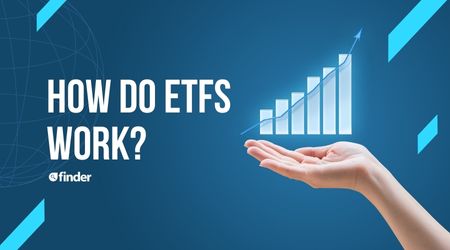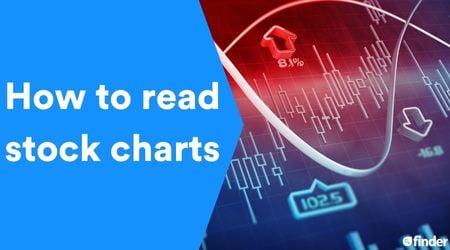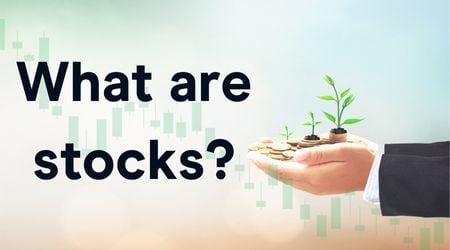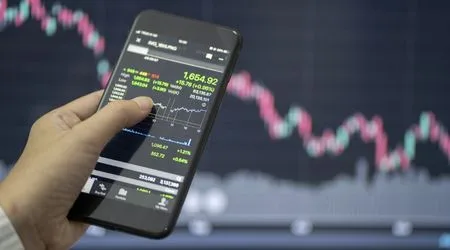Exchange-traded funds (ETFs) and mutual funds both hold a basket of stocks, bonds, currencies or commodities. Because of that, these funds can instantly diversify your holdings through a single investment. This can be ideal for retirement and hands-off investors who want to avoid picking stocks or other assets themselves.
Bottom line
- ETFs are traded on exchanges like stocks, while mutual funds are traded at the end of each trading day.
- You can buy ETFs with most platforms, but smaller brokerages may not offer access to mutual funds.
- You can invest in ETFs for as low as $1, and some platforms even offer free ETF trades. The minimum to invest in mutual funds is often $1,000, and commissions can run up to $50.
ETFs vs. mutual funds: Similarities and differences
| ETF | Mutual fund | |
|---|---|---|
Management: Active or passive | ETFs are typically passive funds, meaning there’s little management over their investments. Passive funds automatically track an index — like the S&P 500 or Nasdaq 100 — and the performance closely matches the index. There are actively managed funds, such as Cathie Wood’s ARK funds, which actively buy and sell stocks to try to outperform an index like the S&P 500. | Mutual funds are known for being actively managed (even though some are passively managed). Many track an index as an ETF would. Actively managed mutual funds can cost slightly more to own than ETFs, because professionals must to make decisions to buy and sell the fund’s holdings. |
How to trade | ETFs are traded on exchanges. This means you can buy or sell them as you would any other stock on the market, during a trading session at the current price. This gives you greater flexibility, and you can use almost any broker or trading platform to buy ETFs. | Mutual funds are traded and priced at the end of each trading day. Typically, large and established brokerages like Vanguard and Interactive Brokers offer mutual funds, while newer trading platforms may not. |
Cost | ETFs often have low or no buy fees. Some brokers like Wealthsimple and National Bank Direct Brokerage offer $0 commission on ETF trades. What’s more, ETFs often have a lower expense ratio — i.e. an annual fee to own the fund — of less than 0.4% on average. That’s $4 each year for every $1,000 invested. However, most index ETFs, such as the S&P 500 ETF cost around 0.03% or $0.3 for every $1,000 invested. | Depending on the broker and the mutual fund, it may cost you anywhere between $10 and $50 to buy into a fund. Some brokers, such as TD Direct Investing, offer numerous mutual funds without any fees. As for the expense ratio, expect to pay slightly more for a mutual fund — typically between 1% and 3% on average in Canada, although some funds charge less. This fee is between $5 and $10 each year for every $1,000 you invest. However, S&P 500 mutual funds usually have a low expense ratio of less than 0.1%, which is less than $1 for every $1,000 invested. |
Minimum investment | With ETFs, you can start investing with any amount. In the past, you had to invest enough money to buy at least 1 share of an ETF. But with many brokers offering fractional shares, you may be able to buy a fraction of an ETF share for as little as $1. | Mutual funds come with specific minimums. For example, to invest in some Vanguard mutual funds, you need to invest at least $500. |
Taxation | ETFs are usually more tax-efficient than mutual funds. Basically, you won’t pay capital gains taxes unless you sell your ETF shares for a profit. You’re not taxed on earnings from investment held TFSAs (annual limits apply). | Mutual funds tend to incur higher capital gains taxes. That’s because mutual funds are actively managed, meaning the asset manager often buys and sells shares. Capital gains taxes could be passed on to everyone who owns shares in the fund, regardless of whether you sold your shares. You’re not taxed on earnings from investment held TFSAs (annual limits apply). |
Tax-free savings accounts (TFSAs)
ETFs vs. mutual funds: Which is right for you?
Both assets offer a similar type of investment, but ETFs are more liquid, meaning you can buy or sell shares whenever you want. ETFs are also generally cheaper to buy and more tax-efficient.
The only thing going for mutual funds is that many are actively, professionally managed. To be fair, there’s also a growing number of ETFs that are actively managed, which further narrows the gap between these 2 types of funds.
Active vs. passive management
Actively managed funds use a wide range of data, from quantitative analysis to fundamental and technical analysis about securities and economic trends. This information allows managers to buy and sell assets to capitalize on price fluctuations and try to beat broad market indices.
Being actively managed, these funds often come with higher expense ratios, i.e. annual fees.
On the other hand, passively managed funds are those that use computer programs to trade assets. The goal is for the fund’s price to closely match the moves of a particular index, say the S&P 500 or Nasdaq Composite. Because of this, passive funds typically have lower expense ratios.
How to invest in ETFs or mutual funds
- Choose a stock trading platform. Make sure to check that the platform you choose offers access to either ETFs or mutual funds.
- Open your account. You’ll need an ID, bank details and Social Insurance Number (SIN).
- Confirm your payment details. Fund your account with a bank transfer.
- Find the stock you want to buy. Search the platform, and buy shares in an ETF or mutual fund.
Compare more platforms to invest in ETFs or mutual funds
Finder Score for stock trading platforms
To make comparing even easier we came up with the Finder Score. Trading costs, account fees and features across 10+ stock trading platforms and apps are all weighted and scaled to produce a score out of 10. The higher the score the better the platform - simple.
Frequently asked questions
More on investing

What are the best stocks for beginners with little money to invest?
Want to dive into investing but don’t have much to spend? Take a look at these types of stocks.
Read more…
Meme stocks: What they are and examples of popular stocks
Meme stocks can produce large gains in short periods, but the stocks are volatile.
Read more…
How do ETFs work?
Your guide to how ETFs work and whether this type of investment is right for you.
Read more…
How to read stock charts
Learning how to read stock charts and recognize chart patterns can unlock your success as a trader.
Read more…
What are stocks?
Owning a stock means you own part of a company and can potentially grow your wealth. But there is a risk of loss.
Read more…
How to analyze a stock
Learn how to research stocks and find the right investment opportunities in 4 steps.
Read more…More guides on Finder
-
How to trade futures
Futures trading can be rewarding, but it’s not for everyone. Learn the steps to trade futures, including examples and fees to consider.
-
Investment calculator
Use this calculator to find out how much you can grow your money.
-
Investing in your 40s: 8 ways to prepare for retirement
How to invest for retirement: 8 ways to safeguard your portfolio.
-
6 places to find investment advice
Tips for beginning investors and high net-worth individuals alike.
-
Retirement planning
Get actionable tips on how to prepare for your ideal retirement.
-
Investing in your 30s: 8 wealth-building tips
Prepare to revamp your asset allocation and explore new investment classes when you’re in your 30s.
-
How to start investing in your 20s: The 7 tips for beginners
Read our 7 tips for starting a portfolio if you’re new to investing.
-
Real estate investment
Check out these real estate investment options from REITs and rentals to mutual funds, house flipping and more.
-
Questwealth Portfolios vs Wealthsimple: Which robo-advisor is right for you?
Find out which of these popular Canadian robo-advisors you should choose to for your financial situation.
-
What are bonds?
Bonds are fixed-income assets that earn interest. But bonds may underperform other asset classes in the long run.
